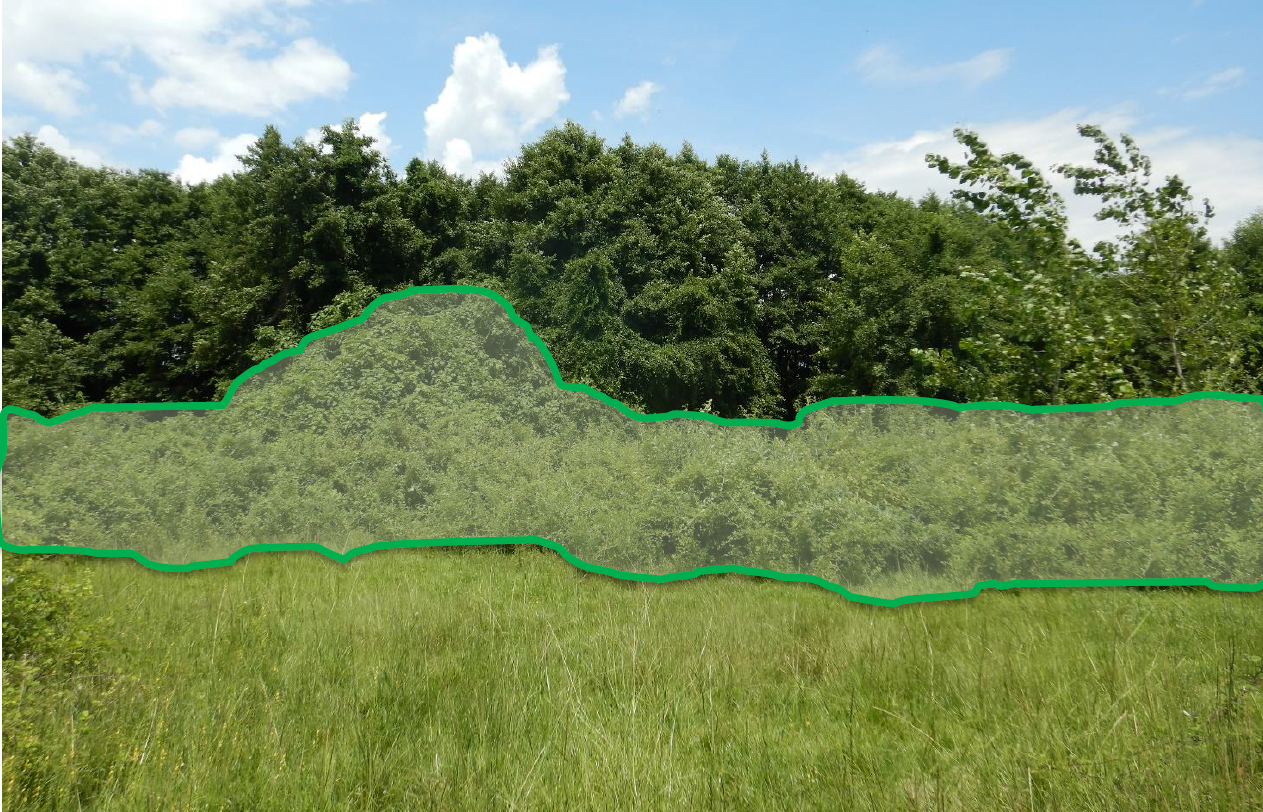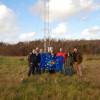Fifteen (15) circular permanent plots were established in the alluvial forest (habitat 91E0*) of Nestos. The plots were homogeneously distributed along habitat 91E0*, both in the East (7 plots) and West bank (8 plots) of the Nestos river. In every plot, diameter at breast height and tree height of all individuals were measured, and all tree species were identified. Altitude (m), slope (%), canopy density (%), shrub cover (%) and herbaceous plant cover (%) were also recorded for each plot. Τhe main parameters determined for each plot were: composition, density, diameter distribution and basal area.
At the same time, a regeneration analysis was carried out in the same permanent plots by measuring the height of all plants which had a diameter below 2.5 cm and a height above 20 cm, and species were also identified. These parameters were used to calculate the Index of Regeneration (IR) and the average regeneration height
In total 17 tree species were recorded in the 15 permanent plots. The dominant trees species is Alnus glutinosa with a density significantly higher than the other species surveyed. However, Acer negundo appears more vigorous in the alluvial forest located in the west bank of Nestos river. Salix alba and Populus nigra seem to be also pretty stable. Fraxinus angustifolia is very limited. It wasn’t apparent in the forest stands, except few seedlings found in the west bank of the Nestos river, but its regeneration has been characterised as pretty scarce.
In terms of structure, stands of Alnus glutinosa, Salix alba and Populus nigra appeared to be more stable, because they consisted of trees with a wide range of diameter classes. Populus alba and Alnus glutinosa regeneration appeared to be extended, with Populus alba being more extended in the east riverbank and Alnus glutinosa in the west. On the contrary, Populus nigra regeneration wasn’t apparent. Comparing the average plant height, plant density and index of regeneration between the east and west banks of the Nestos river, the alluvial forest in the east bank shows more stable regeneration dynamics.

An alarming fact is that the study of the regeneration in the alluvial forest revealed that the species Amorpha fruticosa and Acer negundo are the most extended species and they suppress the regeneration of the native ones. Investigating further the presence of Amorpha fruticosa and Acer negundo in the alluvial forest, our analysis indicated that these two alien species suppress the native ones. Particularly, Amorpha fruticosa represents one of the most dangerous invasive species spreading quickly in many areas of south-eastern Europe.

Encroachment of Amorpha fruticosa.
















